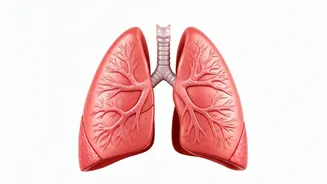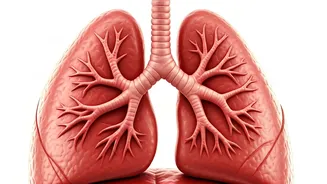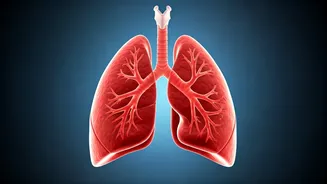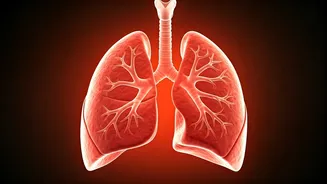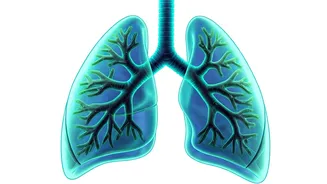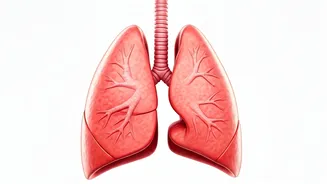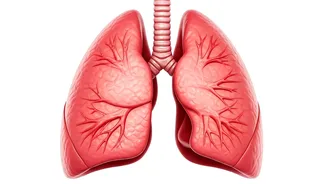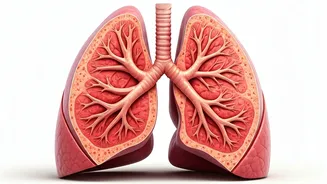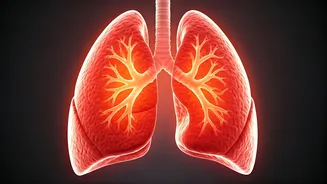Diaphragmatic Breathing
Diaphragmatic breathing, often known as belly breathing, stands as a cornerstone exercise for strengthening lungs. This technique involves consciously
engaging the diaphragm, a crucial muscle for respiration. To practice it, individuals should sit or lie comfortably, placing one hand on their chest and the other on their abdomen. As they inhale slowly through their nose, the abdomen should rise while the chest remains relatively still. They should hold their breath for a moment before exhaling slowly through pursed lips, allowing the abdomen to fall. This method encourages deeper, more efficient breaths, improving oxygen intake and reducing stress on the lungs. Regular practice can gradually increase lung capacity and improve overall respiratory function. It's a simple yet powerful technique, perfect for use any time and anywhere to promote tranquility and better breathing.
Pursed-Lip Breathing
Pursed-lip breathing is a technique particularly beneficial for those with lung conditions. This exercise helps to slow down the breathing rate and can improve the exchange of oxygen and carbon dioxide. To perform it, individuals should inhale slowly and deeply through their nose, keeping their mouth closed. Then, they should purse their lips as if preparing to whistle and exhale slowly through their pursed lips. The exhalation phase should be twice as long as the inhalation. This method creates a back pressure in the airways, helping to keep them open longer, promoting better airflow. By practicing pursed-lip breathing, individuals can reduce breathlessness and increase the effectiveness of each breath, supporting better respiratory health. It is particularly effective during moments of breathlessness, offering instant support and enabling better breathing control.
Deep Breathing Exercises
Deep breathing exercises, encompassing a range of techniques, serve to improve lung capacity and boost respiratory strength. These exercises involve controlled, slow, and deliberate breaths designed to fully utilize the lungs' capacity. A basic form involves inhaling slowly and deeply, filling the lungs from the bottom to the top, holding the breath for a few seconds, and then exhaling slowly. Other variations incorporate different breath-holding times or patterns. Regularly practicing deep breathing exercises helps to increase the amount of oxygen the body receives, supporting enhanced energy levels and improved well-being. Furthermore, such practices can help reduce stress and anxiety, contributing to better overall health and a strengthened respiratory system. It can also enhance one's focus and relaxation levels.
Thoracic Expansion Exercise
Thoracic expansion exercises focus on expanding the chest cavity to increase lung capacity. This involves movements that stretch the chest muscles, encouraging fuller breaths and better oxygen intake. A simple exercise involves standing with feet shoulder-width apart, raising the arms to the sides at shoulder height, and then taking a deep breath, focusing on expanding the chest. Another method uses a similar stance but involves clasping hands behind the back and gently pushing the chest forward while inhaling. These exercises improve the flexibility of the chest wall and promote a more efficient exchange of gases within the lungs. Regular participation can lead to increased lung volume and a stronger respiratory system, particularly beneficial during winter when lung function might be challenged by the cold and flu season.
Aerobic Activities
Aerobic activities form a critical part of enhancing lung health and overall respiratory function. These activities, which include brisk walking, jogging, swimming, or cycling, increase the heart rate and breathing, thus enhancing lung capacity. Through continuous movement, the body demands more oxygen, leading to the lungs working more efficiently. Regularly engaging in aerobic exercises strengthens the muscles involved in breathing and boosts the body's ability to transport and utilize oxygen. During winter, it's particularly important to maintain these activities to counteract the effects of colder temperatures and potential for respiratory illnesses. Aiming for at least 150 minutes of moderate-intensity or 75 minutes of vigorous-intensity aerobic exercise per week offers significant benefits for respiratory health, improving both lung function and general wellness.
